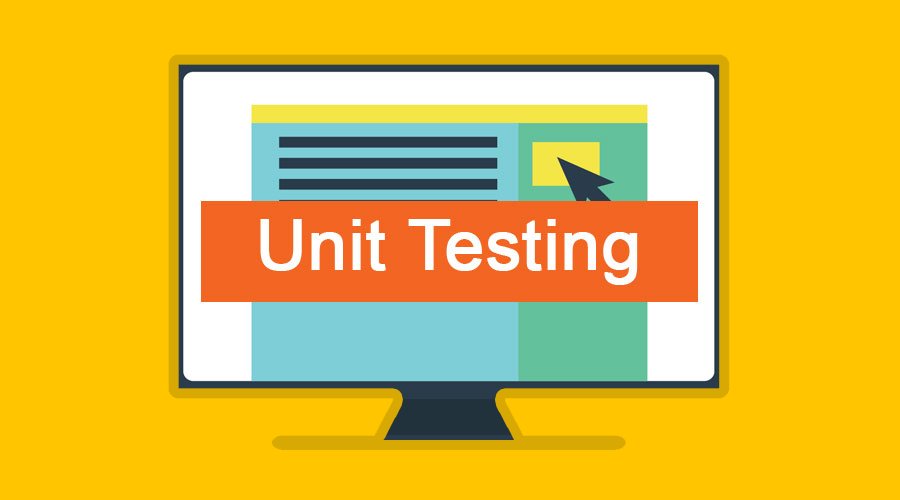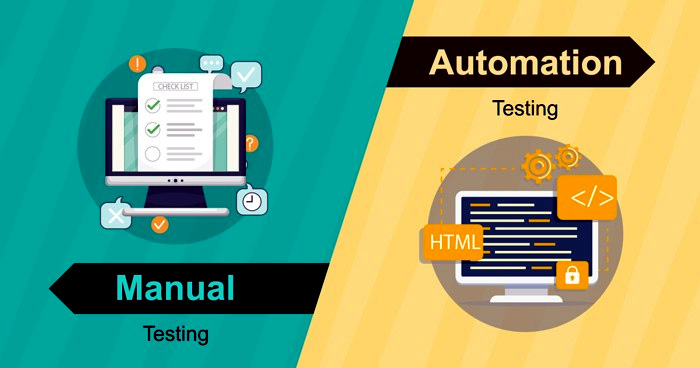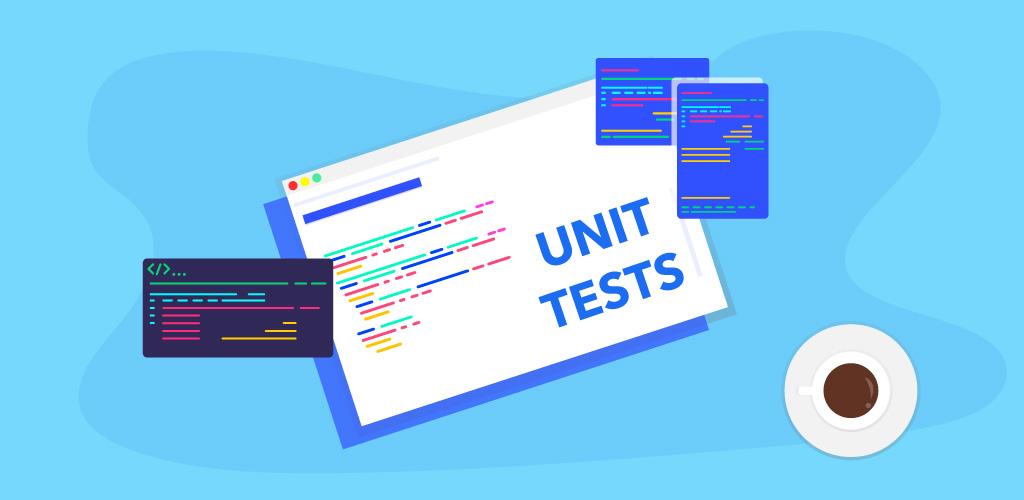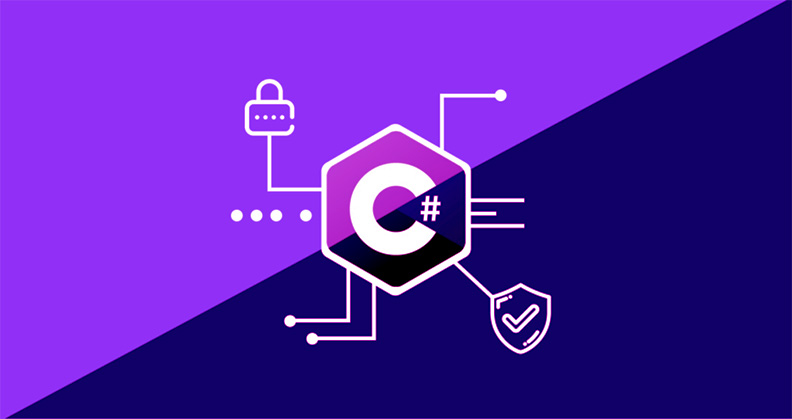The Most Popular Unit Testing Frameworks To Automate Unit Tests
Unit testing is a fundamental and considerable practice in the software testing process. It’s concerned with testing individual units of source code. Many facts of Unit Testing are popular to software professionals, but sometimes we have to brush up on our knowledge for being updated.
This post will discuss the most popular unit testing frameworks deployed by developers.
Table of contents:
- Unit test definition
- What do unit tests look like
- Types of unit testing
- How to do automation testing?
- How does unit testing work?
- Types of software test
- Unit testing framework for C#
- Unit tests frameworks for Java
- Unit testing tools for C or test frameworks for C++
- Open-source JavaScript testing framework
- Unit testing myth
- Unit testing tutorial: What are the best unit testing practices?
- Benefits of unit testing
- Limitations of unit testing
- Unit tested conclusion
Unit Test Definition

Unit testing is a way of testing the smallest piece of code known as a unit that can be isolated in a system logically. A unit is the smallest testable part of a software application. It mainly has one or several inputs and produces a single output. A unit is an individual program in procedural programming, while object-oriented programming languages include abstract class, Base/ Superclass, and Child/Derived class. Current versions of unit testing can be found in frameworks such as JUnit or software testing tools such as TestComplete. If you look a little further, you will find SUnit, the mother of all unit testing frameworks developed by Kent Beck, and a reference in chapter 5 of the Art of Software Testing.
What does a Unit Test look like?
A unit can be almost anything you want, a method, a line of code, or a class. Generally though, the smaller, the better. Unit tests are automated tests written and run by software developers to ensure that a section of software meets its design and behaves as desired. Typically in procedural programming, a unit could be an entire module; however, it’s more commonly an individual procedure or function. A unit is usually a whole interface in object-oriented programming, like a class or an individual method.

Types of Unit Testing
To do unit testing, developers write a section of code to test a specific function in a software application. Developers can also isolate this function to test more rigorously, revealing unnecessary dependencies between the function being tested and other units to eliminate the dependencies. Typically, developers use the Unit Test framework to develop automated test cases for unit testing.
There are two types of unit testing:
- Manual testing
- Automated testing
Generally, unit testing is commonly automated; however, you can still perform it manually. Software engineering doesn’t favor one over the other, but automation is preferred. A manual approach to unit testing might employ a step-by-step instructional document.

How to do Automation Testing?
Under the automated testing approach, a developer writes a section of code in the application to test the function. They can later comment and get rid of the test code when the application is used. A developer could also isolate the function to test it more rigorously. This is a more thorough unit testing environment than the natural environment. Separating the code assists in revealing unnecessary dependencies between the code being tested and other data spaces and units in the product. These dependencies can then be eliminated.
Generally, a coder uses a UnitTest Framework to develop automated test cases. Utilizing an automation framework, the developer codes criteria into the test to verify the correctness of the code. During the execution of test cases, the framework logs failing test cases. Based on the severity of a failure, the framework might halt subsequent testing.
Typically the workflow (lifecycle) of unit testing is:
- Create test cases
- Review/rework
- Baseline
- Execute test cases
How does Unit Testing work?

To test units, mocks are required. Are mocks needed to do testing on functions? Yes, without developing mocks, functions cannot be unit tested. Testing works based on mock objects. Generally, mock objects work to fill in for missing parts of a program. For instance, there might be a function that variables or objects that are not created yet. To test a function, mock objects are created. In such situations, mock objects fill missing parts. Unit testing methods include:
Black-box testing
Black box testing is a type of testing; a tester is not aware of the internal functionality of a system. That means the internal structure of the function to be tested is unknown.
White-box testing
White box testing is referred to as glass box testing or transparent testing. In this kind of unit testing, the tester is aware of internal functionality. The internal structure of a function or item to be tested is unknown.
Gray-box testing
It is known as semi-transparent testing. This software testing method combines Black and White Box testing. It is the kind of testing in which the tester is aware of the internal functionality of a unit or unit but not at a more profound level, such as white box testing. In this, the user is partially aware of the internal functionality of a system. The different types of testing covered under a Gray box testing include:
- Regression testing
- Orthogonal pattern testing
- Pattern testing
- Matrix testing
Some of the coverage techniques used in unit testing are listed here:
- Finite State Machine Coverage
- Condition test Coverage
- Branch Coverage testing technique
- Decision Coverage
- Statement Coverage
Types of Software Test
Different software tests such as acceptance testing and system testing are suitable for various scenarios, and which to utilize will depend on the application being tested and your development methods. We have picked out the most popular methodologies, which can be used singly or more often in combination. When selecting which tests to automate, it is sensible to prioritize tests that will run several times during the project. Automating the most basic tests will free up the team to manage more advanced stuff.

Integration Tests
Integration tests manage multiple components at once to see how the application works as a whole or how it performs with hardware. For instance, it could check if an eCommerce app sends a confirmation email when a customer purchases. Integration testing focuses mainly on the interfaces and information flow between the modules instead of unit functions that have already been tested.

Unit Tests
Unit tests engage testing individual components of an application to make sure that each one performs as expected. Usually designed by the same programmers who wrote the code for the unit, they are one of the simplest QA tests to automate. Unit testing makes bug-spotting simpler since it is specific enough to pinpoint a problem. Debugging is easy, too, since only the latest changes need to be fixed when a test fails. Defects are often fixed as soon as they are found.

Smoke Testing
Smoke tests are further assessments used by testers to check if the software’s main functions work correctly. It is also called build verification testing since it checks the stability of the software build. Typically, developers can fix any problems before proceeding with the following testing stage.
Regression Testing
Regression tests are deployed to confirm that a recent change to the code or program has not adversely affected the application’s existing features. It means re-running non-functional and functional tests as a final check before releasing the product.

Performance Testing
Performance tests are a series of non-functional tests deployed for checking the software’s stability, reliability, and speed under a particular workload- like the number of people using the application at any one time. The aim is to make sure the software satisfies performance requirements and identify and fix performance-related issues.

End-to-end Tests
This is a more comprehensive unit testing approach, which checks the entire software project from the start to the end and ensures that all the integrated pieces run as desired. It aims to recreate real user scenarios and concentrates on aspects of the system that cannot be reliably assessed with smaller tests.
Functional Testing
Functional tests check that the application can perform a set of functions, as determined by the requirement documentation. Automated tools and manual testers provide suitable input and ensure desired output. Functional testing utilizes black-box testing techniques in which the tester does not know the underlying code.

Security Testing
Security testing is a kind of software testing that uncovers threats, vulnerabilities, risks in software applications and prevents malicious attacks from intruders. Security tests aim to identify all possible weaknesses and loopholes of the software system, resulting in a loss of revenue, information, or a bad reputation of the organizations.
Data Integrity Testing
Data integrity testing is when data is verified in a database if it is accurate and functions as per the requirements. Also, it is utilized to validate if the information is modified, corrupted unexpectedly while accessing the database. Tests are done regularly to make sure stored data is unchanged and to search for new bugs which could alter the files present in the database.
Unit Testing Framework for C#

One of the top C# unit testing frameworks is Nunit.

NUnit
NUnit is a unit testing framework tool that belongs to the xUnit family and is written entirely in C#. Various unit testing frameworks that derive their functionality and design from Smalltalk’s SUnit are collectively named xUnit. It offers support for all .NET languages, and it serves the same purpose as JUnit does for Java. NUnit is an open source software that was initially ported from JUnit. The modern production release is version 3 and has been completely rewritten to provide many new features.
Unit tests frameworks for Java/ Automated Tested Java Tools
The majority of Java developers are well-informed in writing unit tests. These tests are automatically run during build time with continuous integration tools such as Team City or Jenkins. As the importance of automation testing is increasing, unit testing frameworks like JUnit are gaining traction.

TestNG
TestNG is an open-source automation testing framework mainly designed for the Java programming language. TestNG is similar to NUnit and JUnit but provides new functionality to make it powerful and simpler. TestNG supports concurrent testing and provides annotation support as well. Typically TestNG has a powerful execution model with flexible test configuration capabilities.

JUnit
JUnit is an open-source unit testing framework tool for a test-driven development environment. JUnit supports the core concept of first testing then coding. This framework is mainly developed for the Java programming language. In this, information is first tested and then inserted in the piece of code. It offers the most straightforward approach for writing code faster and efficiently. It also provides annotation for test method identification.
Unit Testing Tools for C or C++

The unit testing framework for C or C++ popular amongst developers is Embunit.
Embunit
This is an open source unit testing framework developed for software written in C++, or C. Embunit is developed as a unit testing tool for testers and developers for software applications written in C++ or C. In Embunit, there’s no need to write any code; instead, tests are specified as a list of actions. The corresponding source code for the unit tests is generated automatically.
Open-source JavaScript testing framework
JavaScript is the web language, which is the reason for many test automation frameworks. Below is one of the top unit-testing frameworks for JavaScript.
HtmlUnit
HtmlUnit is an open source unit testing framework that supports JavaScript, and it offers GUI features such as links, forms, tables, etc. It provides an open-source Java library that contains a GUI-less browser for Java programs.
HtmlUnit leverages the JavaScript engine known as Mozilla Rhino and supports protocols such as HTTPS and HTTP. It also helps cookies and submits POST, GET, and proxy servers. It is deployed for testing web applications used within frameworks such as TestNG and JUnit.
More automation testing tools:
- PHPUnit: This is a unit testing tool for PHP programmers. It takes small portions of code called units and tests each of them separately. The tool also enables developers to use pre-defined assertion methods to assert that a system behaves in a particular manner.
- EMMA: This is an open-source toolkit for reporting and analyzing code written in Java language. EMMA supports coverage types such as basic, line, and method block. It’s Java-based, so it is without external library dependencies and can access the source code.
- JMockit: This is an open source Unit testing tool. It’s a code coverage tool with path and line metrics. It enables mocking API tests with verification and recording syntax. This tool provides path coverage, line coverage, and data coverage.
- Selenium automation testing tool: Another interesting tool is Selenium. Selenium is one of the popular browser automation tools. With the selenium automation testing tool, you can automate interactions with a web browser. In practice, most people use Selenium to automate interactions with their web applications, effectively creating automated tests for their web UIs. Selenium automation testing tool- without the aid of Selenium IDE- is not a standalone tool. Selenium tests are more like an API, against which you can program- using your favorite platform or language- to develop the browser automation you need.
- Karma: Karma is an open-source testing framework tool that offers a productive testing framework. It’s a test runner for JavaScript that runs tests on real devices. It also facilitates easy debugging and efficiently integrates with Jenkins, Travis, or Semaphore. Typically Karma is known as ‘Testicular’ that is Spectacular Test Runner for JavaScript.
- JTest: Jtest includes metrics analytics, static analysis, and run-time error detection. It also performs load testing, end-to-end functional and regression testing for a complex application. It assists in capturing actual code behavior and generates Junit tests for coverage analysis.
Unit Testing Myth
The truth is unit testing increases the speed of development. Programmers think integration testing will catch all mistakes and don’t execute the unit test. After units are integrated, very simple errors that could have easily been found and fixed in unit testing take a very long time to be fixed and traced.
Unit Testing Tutorial: What are the best unit testing practices?

Here is a list of unit tests best practices:
- Test only one code at a time
- Unit test cases should be independent. Unit test cases should not be impacted in case of any enhancements or modifications in requirements.
- Bugs identified during unit testing should be fixed before proceeding to the next phase in SDLC.
- Ensure use of AAA for readability: AAA means Arrange, Act, and Assert. This trend helps separate what is being tested from the arrange and assert steps, therefore reducing the inter-mix of the assertions with the assistance of the Act. Thus, the test cases are more readable.
- Adopt a test as your code approaches. The more code you write without unit testing, the more paths you must check for mistakes.
- In case of a change in a code in any module, make sure you have a corresponding unit Test Case for that module and that the module passes the tests before transforming the implementation.
- Follow consistent and clear naming conventions for your unit tests.
Benefits of Unit Testing
| Unit testing fixes bugs early in the development stage only | This saves a lot of cost, effort, and time. Imagine if there were no unit tests performed, the code would go to and from the quality assurance team for very simple problems. |
| It makes it simple to modify and maintain code. | TDD is not new; however, at this point, it is still mainly for the go-getters. Typically, the rest of us are checking our work. Writing unit tests once you have completed writing the production code might be a more traditional way of doing it; however, it is no less beneficial. After you have made any changes to the code, rerun the tests, and all the defects are caught with no hassles.
Tests that can be efficiently run with every build of your product serve as change detection notifying you when code modifications in unexpected ways. |
| Good unit tests serve the purpose of detailed documentation. | When a developer writes unit test cases, s/he is inadvertently writing the anticipated functionality of the code. This is simply nothing; however, the documentation explains the code’s working. |
| It also enforces modularity. | Unit testing is run on individual components, which indicates that the code needs to be granular as possible. This ensures that the code is aptly categorized into modules. |
Limitations of Unit Testing

Testing will not catch every mistake in the program since it cannot assess every execution path in any but the most trivial programs. This challenge is a superset of the halting problem, which is undecidable. The same is true for unit tests.
Besides, by definition, unit testing only tests the functionality of the units themselves. Thus, it will not get integration errors or broader system-level errors. Unit testing should be done together with other software testing activities since they can only show particular mistakes and offer a complete absence.
An elaborate hierarchy of unit tests doesn’t equal integration testing. Generally, integration with peripheral units should be included in integration tests but not in unit testing. Typically, integration testing still depends heavily on humans testing manually; global-scope or high-level testing can be hard to automate like manual testing often appears.
Integration testing generally still depends heavily on humans testing manually; global-scope or high-level testing can be hard to automate like that manual testing usually appears cheaper and faster.
Software testing is a combinatorial issue. For instance, every Boolean decision statement requires at least two tests- one with an outcome of false and one with an outcome of true. Thus, for every line of code written, programmers usually need three to five lines of test codes. This takes time, and its investment might not be worth the effort. Some issues can’t easily be tested at all, for instance, nondeterministic or engaging multiple threads. Additionally, code for a unit test is as likely to be buggy as the code it is testing.
Another problem related to writing the unit tests is the difficulty of setting up realistic and beneficial tests. It is vital to create relevant initial conditions so the part of the software being tested acts like part of the complete system. If these initial conditions are set incorrectly, the test will not be exercising the code in a realistic context, which reduces the value and accuracy of unit test results.
To acquire the desired benefits from unit testing, rigorous discipline is required throughout the software development process. It is vital to keep careful records of the tests that have been conducted and all modifications that have been made to the source code of this or any other unit in the application. The use of a version control system is vital. If a later model of the unit fails a specific test that had previously passed, the version-control application can provide a list of the source code changes applied to the unit since that time.
It is also vital to implement a sustainable process to ensure that test case failures are assessed often and addressed immediately. If such a process is not ingrained and implemented into the team’s workflow, the software will advance out of sync with the unit test suite, increasing false positives and lowering the effectiveness of the test suites.
Generally, unit testing embedded system software presents a unique problem. Since the application is being developed on a different platform than the one it will eventually run on, you can’t readily run a test program in the actual deployment environment since it is possible with desktop programs.
Unit tests tend to be simplest when a method has input parameters and some output. It is not simple to create unit tests when a significant function of the method is to interact with something external to the software. For instance, a method that will work with a database might need a mock-up of database interactions to be developed, which possibly will not be as comprehensive as the actual database interactions.
Unit Tested Conclusion

A unit test is defined as a software testing approach where individual components or software units are tested. As you can see, there is a lot involved in testing a unit. It can be hard or rather simple based on the application code being tested and the testing tools, strategies, and philosophies used. Unit testing is always vital on some level. That is a certainty. Note that the type of software your company creates is critical to help you choose which types of software testing- and software application tools, by consequences- are the best match for it.
For example, if you develop software that does not have a graphical user interface (GUI), you do not need to worry about graphical user interface testing and the tools that allow it. There are types of software that have no UI or graphical interface. If that is the type of software you create, you do not need UI testing.
On the other hand, if web development is your thing, you would better do end-to-end, front-end testing and GUI testing at a bare minimum.
There are also many types of automated unit testing approaches that are universal to that. The use of tools divides unit testing into several parts like PHP, Python Java Unit testing and C++ but the main purpose is to make unit testing automated more accurate and rapid.










